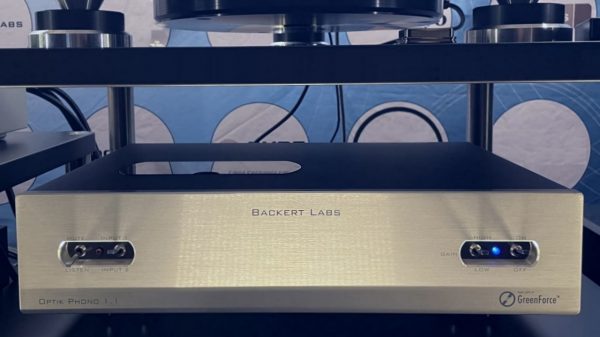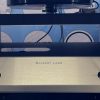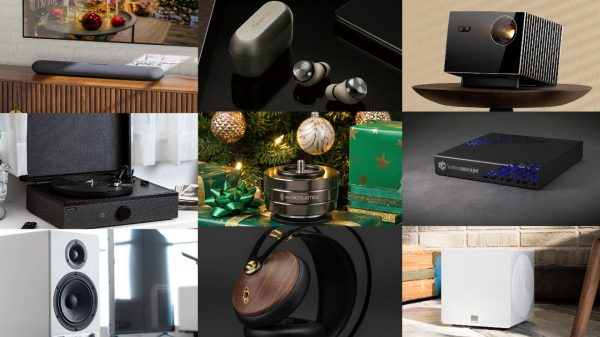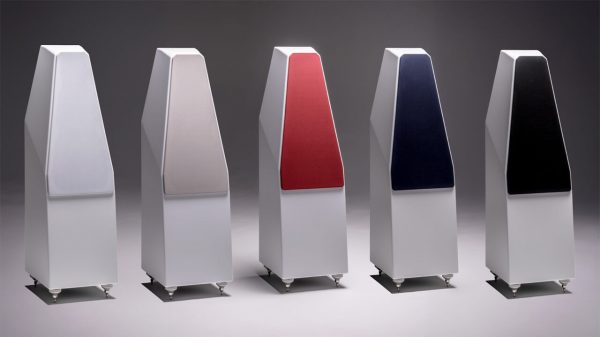Since her initial release, Sophia has changed the way many music lovers think of high-end loudspeakers — and Wilson Audio. Sophia challenged the idea that some audio qualities are, by their very nature, mutually exclusive: high resolution and musicality, very wide bandwidth and a relatively compact enclosure, large dynamic swings and a load almost any amp can drive. A designer had to choose; he could include one of these qualities, but this meant omitting or at least compromising the other. And yet Sophia possesses each of these qualities in nearly equal measure.
Perhaps because of this unusual combination of virtues, Sophia, in both Series 1 and 2 iterations, has attracted an almost cult following since her introduction in 2003. When the decision was made to upgrade Sophia to Series 3, the primary engineering goal was to preserve the qualities that endeared Sophia to so many music lovers. The team had advanced the art of music reproduction in the Alexandria Series 2, MAXX Series 3, and in the all-new Sasha W/P with a variety of new technologies developed for those projects. In order to employ the same technical improvements in Sophia, it became clear early on that it would be necessary to design an all- new loudspeaker. At the same time, it was critical to Dave that he honor, preserve, and (ideally) build upon those qualities that clearly define Sophia’s character.
The result of those efforts is the Sophia Series 3.
All-new Architecture with new Midrange Enclosure Material
When it comes to a loudspeaker’s architectural design, Wilson’s philosophy is driven by the notion that a loudspeaker’s form is inextricably tied to its function. The unique physical features of correct propagation delay and lowering enclosure panel resonances have for de- cades now given Wilson loudspeakers their look. Arguably, there is a form of beauty singular to the congruent interplay of technology and aesthetic ideals.
With Sophia, the primary engineering goal was to further reduce the already very low resonant enclosure. To this end, the X-material enclosure panels of the upper and lower modules are thicker. A new internal bracing strategy, which now includes X-material, also contributes to Sophia’s performance by lowering resonance-borne colorations in its enclosure panels.
Additionally, the Sophia Series 3 joins Sasha W/P in its use of Wilson’s latest proprietary composite — S-Material. Used in the mid/tweeter baffle of the Sophia Series 3, S-Material dramatically reduces measurable and audible noise. S-Material is combined with X-Material to form an extremely inert and low-resonance enclosure.
Revised Crossover
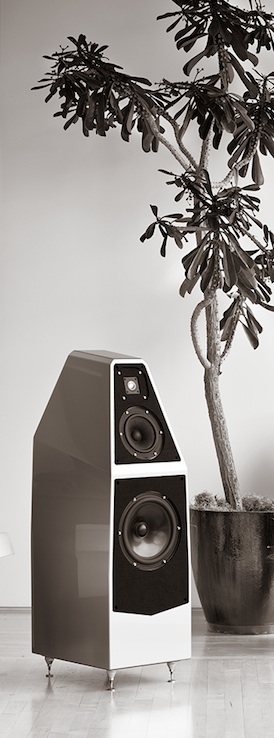
In his earliest commercial designs, David Wilson recognized and uniquely addressed the relationship between the mechanical alignment of a loudspeaker’s drivers and its time-domain performance. Since that time, Dave and his engineers have worked to discover additional sources of time-domain distortion. During the development of the original Alexandria, Wilson found that the interaction between the high- and low-pass filters created a specific type of time-domain-generated noise, which he dubbed “crossover jitter.” In each successive design project, Wilson has worked to substantially reduce crossover jitter along with its deleterious audible effects. Continuous refinements in crossover topologies and specific component choices are made in large part with this in mind. The latest beneficiary of this cumulative design approach is now the Sophia Series 3.
Lowering jitter-induced noise and distortion in the Sophia Series 3 allowed Dave to hear deeper into the sound. Problems previously obscured by noise were now clearly audible. Thus, reducing crossover jitter not only improved expected areas (lower noise floor and less grain structure), it also facilitated enhancements in other performance categories as well. Midrange beauty and musicality, already a strong point of Sophia, are noticeably improved in the Series 3. These traditional strengths are further enhanced by a greater transparency, spacial resolution, bass linearity and dynamics, and midrange clarity. Instrument texture and timbre are more convincingly rendered and complete. Details masked by low-level noise in the prior versions now effortlessly surface from a black background.
Crossover and Resistor Access Panel
The crossover access panel formerly located on the bottom of the Sophia has been moved to the rear of the enclosure. This provides much easier access to the user-serviceable resistors.
New Midrange Driver
When it came to choosing a midrange driver, Dave and the engineers focused on using proven tools. Sophia Series 3 features a simplified version of the remarkable Wilson Audio cellulose/paper pulp composite midrange driver first developed for the Alexandria X-2 Series 2 and since implemented in the MAXX Series 3 and Sasha W/P.
New Tweeter
A great deal of confusion remains in the market place as to what technical qualities are impor- tant to musically authentic high-frequency performance. While other manufacturers pursue dubious performance parameters such as ultra-wide bandwidth or exotic — and exotically expensive — materials, Wilson continues to focus on those technologies that truly contribute to better performance. Sophia Series 3 sources its tweeter from MAXX Series 3 and Sasha W/P. This proven design is slightly more efficient than the tweeter it replaces. It is also more expressive of both large and small scale dynamics. Most importantly, it is better suited and matched to the Wilson midrange driver.
Additionally, aspects of diffraction and noise are more effectively ameliorated in this tweeter. All tweeter diaphragms are partially acoustically transparent. Any out phase or time-delayed reflections that make their way out of the front of the diaphragm is heard and measured as noise and distortion. Wilson’s tweeter topology dramatically reduces this distortion. Proprietary materials in combination with proprietary mechanical configurations are extremely effective at reducing these time-delayed reflections behind the inverted dome, preventing them from corrupting the primary wave. This reduces measurable and audible in-band “noise” heard as artificial texture or grain. While sweet, delicate highs were already a hallmark of Sophia Series 1 and 2, the Series 3 tweeter builds on these strengths with greater dynamics, air, and resolution. Highs now emerge from a silent background, free of spurious grain and texture.
New Woofer
The proprietary Sophia woofer, which debuted in the Series 1, has been worked over with special attention to the driver’s frame and motor. The Sophia Series 3 woofer features a magnet structure twice the size of the earlier woofer. The goal was to retain the tunefulness of the original design, and increase the overall impact, speed, agility, and linearity of the bass. The new woofer also has much greater tonal shading and nuance.
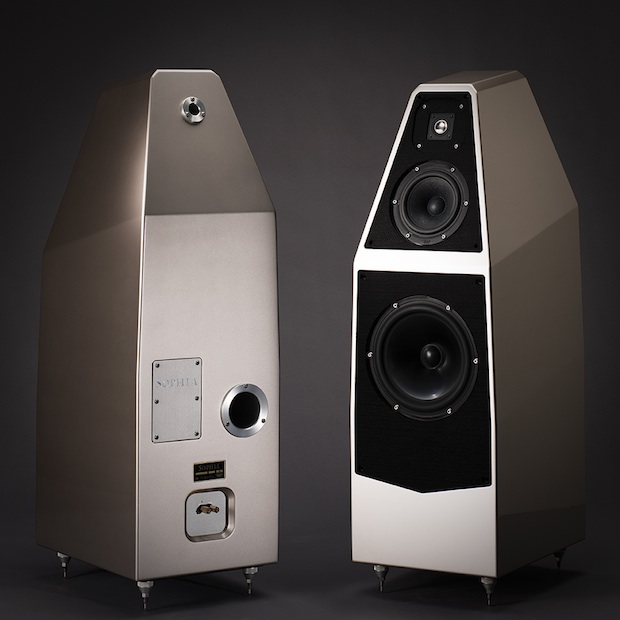
Price: U.S. Retail — $16,700.00
Content-based pricing — the policy of basing price on the actual cost of manufacture — is a part of Wilson’s commit- ment to authenticity. This tradition continues with the Sophia Series 3. As with the Sasha W/P, the Sophia Series 3 was designed from the ground up to leverage the increased efficiencies inherent to Wilson’s new manufacturing facility. So while the Sophia is more sophisticated and complex in every physical detail, the efficiencies that come as a result of this unprecedented collaboration between engineering and manufacturing have allowed us to introduce Sophia Series 3 at the same price as the outgoing Series 2.
Upgrade Program:
Because of massive changes in cabinet structure as well as the material being used in the construction of the enclosure, it is not possible to upgrade a Series 2 to Series 3.
Availability:
First shipments for existing orders are scheduled for June 1, 2010. Please place orders for demo and sell-through needs as soon as possible to reserve your shipment position. The orders will be filled and shipped on a first come, first serve basis. Demo orders will be the first priority so all of Wilson’s dealers and distributors can begin showing the Sophia. Customer sell-through orders will be scheduled after demo orders have been filled. Check with Jerron Marchant for specific ship dates for your order.



